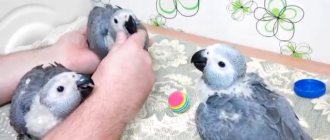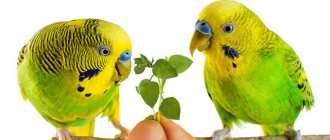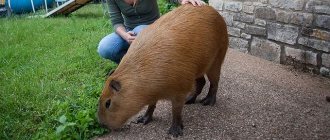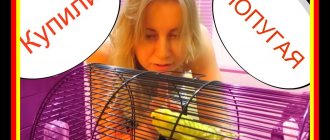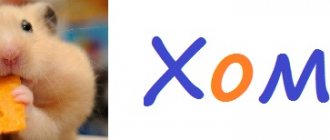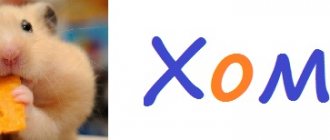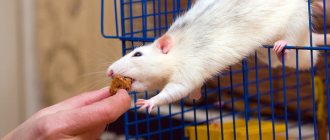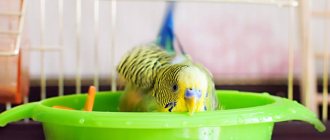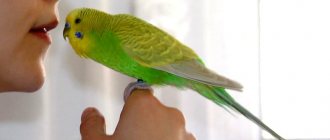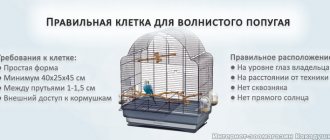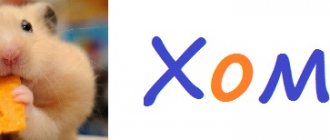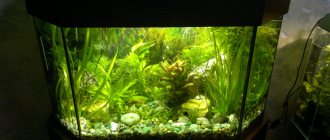- home
- Parrot
- Arrangement
05/18/2019 If you have chosen a parrot as your favorite pet, you need to organize a convenient place for it in your apartment or house. Of course, he will spend most of the day in his crate, so it should have everything you need for your pet's comfort. A perch is one of the most important pieces of “furniture” for a parrot of any species. Nowadays pet stores offer a wide selection of their varieties, but first you need to figure out which one is suitable for your bird.
Types of perches
Perches (perches, perches) are varied.
| Perches for parrots | ||
| Artificial | pros | Flaws |
| Plastic | They are easy to wash and clean, so they are recommended when the parrot is sick, when complete disinfection is required. | • Cannot be used daily. • Parasites grow in cavities. • Provoke the formation of calluses. |
| Rubber | • Change shape if necessary. • Suitable for walking areas. | The dye and other chemical components in the composition may pose a threat to the health of the feathered pet. |
| Braided from cotton threads on top and with wire inside | • Decorate the interior. • Made from natural cotton material. | There is a risk that the parrot may clog the crop with threads or become entangled in them. |
| Perch nozzles with sand spraying | • Option for grinding claws. | • Paw skin irritations • Calluses |
| Concrete or cement perches | • Grinding of claws and beak. • Additional additive. | • Cold (there is a risk of freezing feet). • The goiter may become clogged. |
| Additives made of pumice (volcanic stone) | • Only for grinding beak and claws | • Not suitable for sitting. |
| Made or sprinkled with small mineral stones | • Grinding claws and beak. • Additional mineral feeding. • Additional additive. | • Mineral perches are not used for prolonged sitting. |
| Heated perches | • Used for outdoor enclosures and outdoor walking areas. | If a bird pecks at the wire used for heating, it may die from an electric shock. |
| Natural | pros | Flaws |
| From tree branches (selected independently) | An ideal option that provides maximum comfort and recreates the natural environment. | No |
| Wooden perches - factory-made (store-bought version) | If the diameter is selected correctly, they are well suited for birds. | • Requires improvement - it is necessary to scrape out nicks and grooves on the perfectly smooth surface of the branches, otherwise the bird will feel pressure on the limbs. • They do not have bark, which helps to wear down the beak. |
We prepare the material
There are certain rules for preparing twigs for parrot perches.
Where and how?
- We go to the forest for suitable materials. It is necessary to do this away from roads, landfills, and industrial enterprises.
- You shouldn’t take risks with “dacha” branches either: what if the trees were sprayed for pests?
- carefully for any parasites or rot on the branches.
- Fresh branches should also not be used immediately as perches: the raw materials are first thoroughly washed with a brush with warm water, then doused with boiling water and dried.
There is no need to remove the bark from the branches: the parrot, gnawing on them, will grind off its beak, at the same time “refueling” with a certain vitamin and mineral dose.
It is recommended to make perches from different wood species, since all trees and shrubs have different hardness and porosity. Over time, you can determine which tree perch your pet likes to chew on the most, and pamper him with his favorite type of wood.
It is recommended to place the shoots cut in autumn in a vessel with clean water and wait until the buds swell, and then use the twig as a perch. Such a perch will serve the parrot as an additional and healthy treat, as it will contain many vitamins, fiber and microelements.
Length and thickness
Pets will love perches of different diameters.
The perches should be equal to the length and width of the cage plus 5–7 mm - they should protrude slightly beyond the boundaries of the parrot’s home. As for the diameter, the most convenient perch thickness for wavy birds is no less than 1.5 cm. If the perch is thinner, it will create excessive stress on the bird’s legs. The parrot's fingers should rest on the perch, not hang under it, and its claws should touch the perch.
To prevent the legs from getting too tired while in one position, it is recommended to place perches of different thicknesses in the bird’s home. If there are perches of different thicknesses in the cage, the parrot will choose the one that suits him best at the moment.
It’s good if the diameter along the entire length of one additive is not the same. In this way, “corns” on the bird’s feet can be avoided, since the pressure on the same places will be reduced.
Installing the perch step by step
We've sorted out the material for making the additive.
- Tools needed: knife, fine-toothed hacksaw, tape measure, garden pruner.
- The cage is measured in accordance with the intended location of the perch - along the length or width of the home.
- The branch is cut slightly longer than the established size.
- A small cut is made at the end of the branch.
- The same cut is made on the other side.
If the attachment will be attached at the junction of the rods, then the cuts are made cross-shaped.
- The poles are installed in their designated place.
Why do parrots need perches in a cage?
The poles perform a number of functions necessary for the normal functioning of parrots:
- Act as an overnight stay.
- They are part of the daytime pastime.
- They help to grind down the claws and beak.
- They help birds develop their paw muscles.
For each type of parrot, the types of poles are selected individually.
It all depends on the following aspects:
- number of birds in the cage;
- the size of the bird (the diameter of the perch should be such that the parrot can clasp it well with its toes, and the bird does not experience any discomfort).
Selection criteria
When choosing a perch for a budgerigar, you should definitely clarify the method of attaching it. On sale you can find ordinary blocks that you have to polish yourself. While more expensive solutions offer several mounting options. more critical characteristics are the size of the perch and the material.
Is it worth getting a parrot?
Not really
Diameter
For adult budgies, the diameter of the crossbar should be around 15-18 mm. If young animals are planned to appear in the cage, then it is necessary to take care of 8-10 mm perches. It’s good if the crossbars in the cage are of different diameters, then the bird itself will choose the best option for it.
Material
Flat designs should be avoided. Parrots need to sharpen their beaks and claws, so it's best to look towards abrasive materials. But the main thing here is not to overdo it, otherwise the sharp crumbs can injure the skin on your paws. In addition to perches for sharpening beaks and claws, regular perches should be installed. In this case, heat-saving materials such as wood are suitable.
You should never use toxic products - only environmentally friendly ones. It is dangerous to install household plastic or other similar synthetic material into a cage.
In the hot summer months, when the product begins to emit fumes under the influence of high temperatures, the pet may be poisoned.
Correct placement of perches in the cage
Perches are placed based on the following rules:
- For 1 bird you will need 2-3 pieces.
- The bird's paw should wrap 75% around the pole.
- Perches should not interfere with free movement.
- They are not mounted exactly on top of each other, so as not to get dirty with droppings.
- They are located at different levels (one for sleeping higher - the parrot should not touch the ceiling with its head, and others lower - so as not to touch the bottom with its tail).
- For frequent walking, some of the poles are attached from the outside of the cage - on the roof or on the side wall.
- When several feathered pets live, their perches are placed taking into account that the birds do not touch each other.
Try changing the position of the poles sometimes. In most cases, parrots like such changes and sometimes even cause delight. As an option, hang the poles separately in the room, make a stand out of them, a swing in a cage, or a kind of toy.
Homemade options
Having decided on the parameters of the cage for the budgie, you can begin making it yourself. For this work you will need to acquire:
- tape measure;
- a sheet of plywood;
- pencil;
- a piece of paper;
- pliers;
- nails or screws;
- fine sandpaper;
- wood glue;
- hammer;
- wire cutters;
- metal mesh, the cells of which are 1-2 cm;
- construction stapler;
- screwdriver;
- wooden slats with a section of 2 by 5 cm in the amount of 12 pieces;
- metal profile;
- file;
- screwdriver;
- corner;
- canopies.
To make a cage measuring 0.6x0.25x0.35 meters, you should follow these steps.
- The bottom is cut out of sheet plywood in the form of a rectangle with dimensions of 0.6 by 0.25 meters.
- Along the edges of the bottom there are slats that will serve as sides.
- From the previously prepared slats, 3 pieces of small width along the length of the bottom are cut out. These elements will become grooves for the cage; they are attached to the base with glue.
- A sheet for the pallet is cut from the metal profile, the dimensions of which will allow it to fit into the grooves. The front part, bent 90 degrees, will make cleaning the cage easier.
- 8 blanks are cut out of the slats, with the help of which the mesh walls will be attached. Their length should be equal to the height of the cage.
- Using a screwdriver, holes are made into which parts of the mesh will penetrate.
- Wood blanks are coated with glue and fastened together to ultimately obtain 4 wooden corners.
- A part of the mesh is measured and cut out, which is subsequently attached using a construction stapler to the glued planks.
- Next, the top of the cell is made. Wooden slats are attached to the sides; holes must be pre-drilled in them for attaching the mesh. The same rail should be mounted in the center.
- It is worth attaching awnings to the back side, and then installing a roof for the house. One half of the roof will open, for this it will have a latch.
- It is worth cutting a hole in the front wall for future doors. According to its dimensions, a slatted frame is made, and a mesh is stretched over it. The loop and lock are made of wire.
Which poles should not be used?
For constant pastime, it is strictly forbidden to use the following types of poles:
- Made of plastic;
- From pumice;
- Flexible rubber;
- Threaded cotton;
- Made of concrete.
The use of the above perches is permissible only as a temporary accessory during disinfection or as an additional seating area in places where birds rarely visit.
The wooden options that are offered in the store are used only after additional processing (notching), since they have a smooth, even surface that is not suitable for birds.
Multi-colored budgies
It is also unacceptable to use additives made from prohibited tree branches or store-bought versions of questionable production with damaged packaging.
Branches lying on roadsides or in landfills should not be used. It is also prohibited to cut branches from trees that have been sprayed with chemicals. In both cases, neglecting this recommendation poses a threat to the health of the bird.
Greens for poultry
Is it possible to give birds spicy and fragrant herbs, for example, parsley, dill or cilantro? No, they are harmful to wavy pets. But you shouldn’t completely give up greens. Many parrots will happily gnaw clover, dandelion, fireweed, grapevine, carrot or beet tops, and plantain.
Some gourmet birds love young leaves of birch or willow. However, you should not get carried away - remember that by the end of summer, various harmful substances begin to accumulate in the leaves of trees, so pamper your pet only with spring and summer leaves.
It is best to give the bird the greens that grow in the garden or, at least, away from the roadway.
What does your parrot like?
Please share this article with your friends and like it.
A budgie can become poisoned due to an overdose of harmful substances contained in fruits such as mango, persimmon, papaya, and avocado. Therefore, they should never be given to your pet.
How to make perches for parrots with your own hands
DIY wooden poles are the best option for parrots. Making them is quite simple if you read the step-by-step instructions and take into account the advice of experienced poultry farmers on selecting and using the right material.
| Tree branches | |
| Authorized for use | Strictly prohibited |
| • Cherry • Apple • Plum • Citrus • Raspberry • Viburnum • Currant • Linden • Hawthorn • Hornbeam • Beech • Aspen • Ash • Rowan • Sea buckthorn (without thorns) • Birch • Maple • Willow • Alder • Walnut (without leaves) | • Oak (contain tannins) • Pear (contain tannins) • Bird cherry (lots of tannins) • Poplar (absorbs toxins from the air) • Conifers (lots of toxic resins) • Lilac (lots of toxic compounds) • Elder (causes severe distress) Gastrointestinal tract) • Acacia (contains bird poisons) • From the coffee tree (high caffeine content) |
It is recommended to cut or saw off branches, but not to break them. After cutting, the scar on the tree should be treated with garden varnish.
The optimal time of year to collect twigs is late spring, summer or early autumn.
Fastening, how and with what to fasten
The cage structure is made of welded mesh with a wooden frame.
Regardless of the type of mesh used, the cage production process involves several steps:
- First of all, the frame is assembled; it is made of wooden blocks or metal corners. Fastening can be done with nails, screws or welding.
- The mesh, cut (with a grinder or metal scissors) into fragments of the required size, is attached to the frame using self-tapping screws.
- The mesh sheets are fixed together with staples or clips; it is possible to use wire, but this solution is not entirely safe for animals.
- The floor is formed from wooden slats or fine-mesh sheets. In the second case, the bottom still needs to be reinforced with timber elements.
- The partition (if necessary) is also secured with staples or clips.
- Make doors from timber or slats, attach awnings and latches.
- The roof is made of plywood, metal or mesh. Depending on the material of the frame and roof, it is possible to perform assembly using self-tapping screws or using welding technology.
- The pallet is made of galvanized sheet and fastened with self-tapping screws.
- The feeder and drinker are fixed with brackets.
- All connections must be strong, the structure must not have protrusions, sharp corners, or protruding parts.
To attach the mesh to the posts during the construction of enclosures and pens, knitting wire, hooks, and welding technology are used. To strengthen the chain-link, longitudinal stiffening ribs should be used to prevent the fabric from sagging. An alternative to chain-link for the construction of fences for various purposes, including in agriculture, is Manier mesh (hexagonal).
Craft “parrot” made of wood with bark and gouache painting
Wooden craft parrot made of wood with bark, African bird, made with your own hands, decorated with painting. This souvenir looks very cute, is easy to make, anyone can paint it, the only problem is where to get it or how to make a wooden base for the parrot’s body.
If you have a man at hand, plus his hands grow where necessary, then he can make a blank of a bird’s body. And you can color it together with your child. A painted figurine of a bird can decorate any interior.
One of my posts was devoted to the technology of painting wooden objects . By following the link, you will learn in detail how to proceed (starting from sanding, priming, and finishing the job by covering it with a layer of varnish).
Description
To keep a parrot in captivity, you will need certain devices that satisfy its basic needs. One of them is a bird cage, which ensures the safety of a pet in a person’s home.
On the market you can find a large number of cages of various shapes, sizes, and materials. Their prices also vary widely. There are inexpensive small models for keeping budgies or huge all-metal structures, more like indoor aviaries for large species of birds.
You can design a cage for your pet yourself, which allows you to take into account the individual characteristics of this individual. The main criteria for evaluating a product are design, size, material.
Description of homemade cages for parrots
There are the following types of housing:
- With all metal connection.
The cage is assembled from a mesh or lattice, fastened by spot welding or special devices.
- Combined option.
A plastic or wooden frame holds a metal lattice or mesh.
- All wooden or plastic cages.
They are less common, as they are not very durable and are quickly destroyed by the strong beak of the bird. The mesh and tray are made of the same materials.
Vegetables for poultry
Vegetables are rich in substances beneficial to the bird's body: microelements and vitamins. Any vegetables should be fresh and, if possible, seasonal. They must first be washed under running water to get rid of various toxic chemicals that are often used to spray vegetables. Parrots can be given the following vegetables:
But giving birds garlic, celery, radishes, onions, radishes, eggplant, and potatoes is strictly prohibited. They contain a high content of harmful substances - essential oils or solanine.
Before serving vegetables to your pet, they must be either finely chopped or grated. You can feed your parrot some vegetables separately or add them to other foods. Birds accustomed to vegetable crops happily eat porridge with pieces of vegetables.
Should I buy a ready-made gaming complex?
Pet stores sell generic playgrounds. For the most part, they are made of smooth wooden slats and equipped with standard accessories.
Advantages of a ready-made stand for games:
- Natural materials that are safe for birds were used in production;
- factory parts have straight cuts and smooth surfaces;
- elegant fasteners and fittings are used;
- the ability to choose a suitable design based on size and installation method.
Flaws:
- overly smooth, ostentatious appearance;
- sanded slats are too slippery, and this is harmful to the bird’s feet;
- monotonous modules;
- flimsy assembly, weak connections.
Purchased gaming stand
You can buy a gaming stand ready-made or assemble it from individual modules according to your preferences. Manufacturers of equipment for birds and animals offer various products, all that remains is to make a choice. If none of the complexes suits you, order a model based on an individual sketch. If you have the skills and appropriate tools, you can create a stand yourself and equip it with elements that will not break due to intense games.
Fruit for poultry
For budgies, fruit is often not food unless they have been taught to eat it since childhood. Therefore, the pet may refuse such food. However, getting him accustomed to eating this complementary food is one of your main tasks. Try to unleash your creativity and present the bird with an original cut watermelon, apples or a fruit “garland”. The main thing is to be patient and persevere.
Now let's look at what fruits parrots can eat. “Wavins” can be given the following:
You can also give your pet peach, apricot, kiwi, pineapple, and pomegranate as a treat. These fruits have a high content of various vitamins, microelements and fructose. Any fruit must be served to the bird only fresh, pre-washed. Some foods need to be peeled before serving. For example, banana or orange.
A budgie can become poisoned due to an overdose of harmful substances contained in fruits such as mango, persimmon, papaya, and avocado. Therefore, they should never be given to your pet.
The best original ideas
Below are the most popular homemade toys that any budgie will love.
Kinder surprise container
It is used as a base for storing buttons or beads. Several holes are made in the container, through which the contents cannot spill out. The plastic container is tightly closed and suspended from the ceiling of the cage. The pet will try to get the buttons through the holes.
Playground
Special stands for budgies have become very popular. They are a structure that can easily be moved to a convenient place outside the cage. For its construction, ropes, chains, wires and branches are chosen. The structure consists of several tiers connected to each other. A budgerigar climbs up and down the stairs and rides on a swing, which is decorated with various accessories. The play stand resembles a scaled-down model of a children's ropes course.
Dummy bird
You can make a fake budgie from cardboard or paper. However, this option will not last long. It is better to sew a bird from fabric, stuffing it with cotton wool. You can find many variations of parrot patterns on the Internet. They sew a toy from bright scraps. It's quite easy to do. In addition, the wavy will not notice minor flaws and will mistake the double for its own relative.
To teach your pet new games, you need to introduce them to them gradually, without causing fear.
It is important to praise and treat your pet for trying to approach an unknown object. After this he will no longer be sad
The colorful exotic birds are flocking creatures and cannot live alone. A lonely budgie at home often experiences psychological discomfort and lack of communication. When purchasing a pet, a caring owner takes into account all its needs: chooses a spacious cage, comfortable perches, and dishes. But he often forgets about entertainment for his little pet. For comfortable keeping, toys for budgies are necessary.
Parrot does not eat fruit - causes of the problem
Many owners face this problem. Most often, the reason that a parrot does not eat fruit is incorrect maintenance, which leads to fear of everything new. Here are a couple of examples:
We recommend reading: Drontal Anti-Worm For Kittens
In particular, for the above reasons, the Kakadushka pet store does not sell birds, so as not to become like similar stores, but recommends contacting nurseries and breeders, where they are provided with proper care and maintenance.
